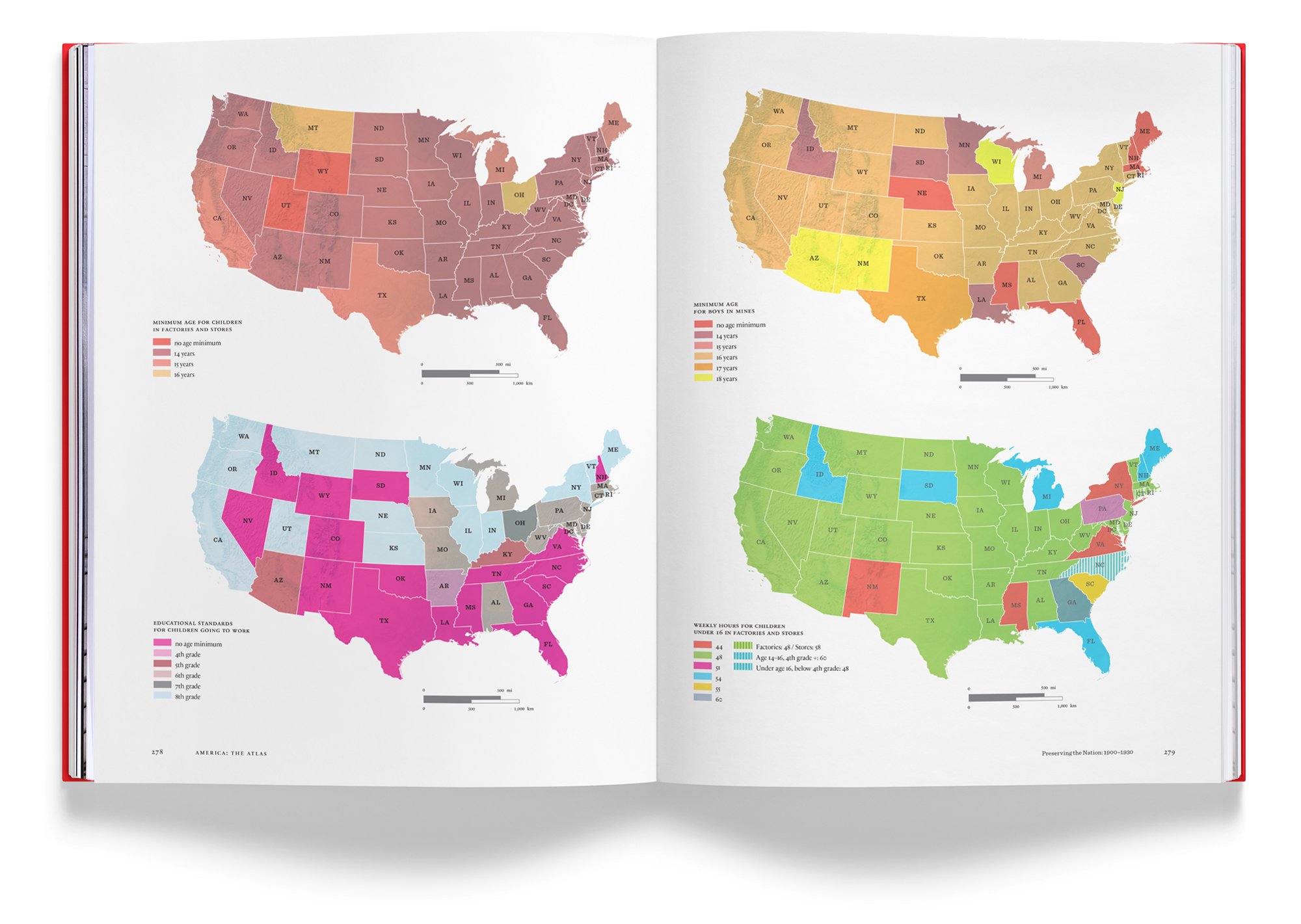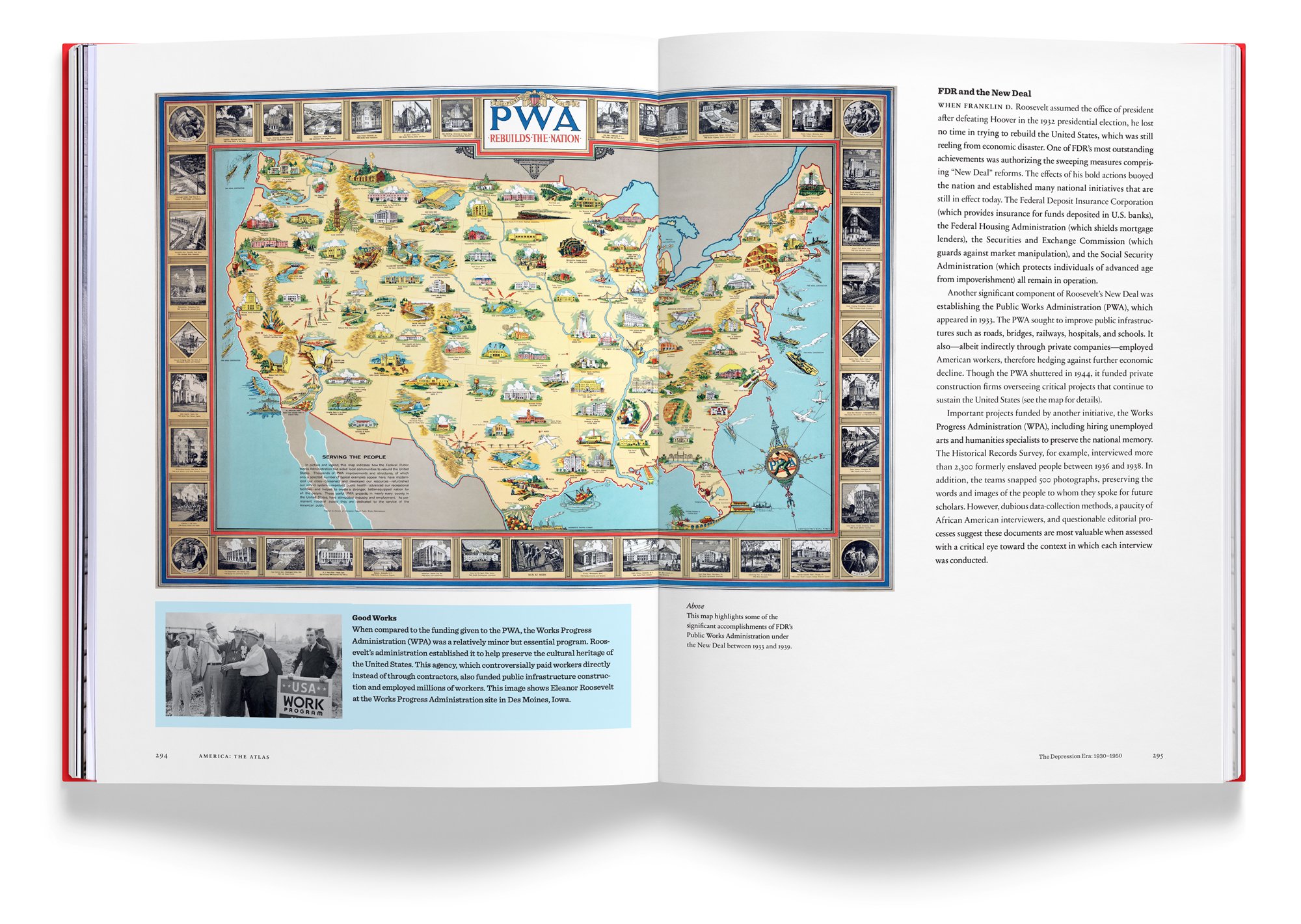America: The Atlas
Thunder Bay Press
An imprint of Printers Row Publishing Group
The Bright Press, an imprint of the Quarto Group
www.quarto.com
For The Bright Press
Publisher: James Evans
Design: Sean Adams
Managing Editor: Jacqui Sayers
In-house Edtior: Emily Angus
Project Editor: David Price-Goodfellow
Cartographer: Julie Witmer
Picture Researcher: Sally Claxton
ISBN: 978-1-64517-842-2
For publication in 2023
from the Foreword
John Stauffer
Sumner R. and Marshall S. Kates Professor of English and
of African and African American Studies, Harvard University
America: A Historical Atlas is, so far as I know, the most comprehensive one-volume book on America ever published. Ambitiously conceived, intricately designed, and elegantly written, it is both intellectually and aesthetically rewarding. The 400+ images, impressively reproduced and arranged, vary in format from maps and landscapes to cityscapes, portraits, posters, architectural and vocational images, genre scenes, and newsprint. The images
are essential components of the story and integral to the narration. The prose urges readers to “read” the images, while the images encourage them to engage with the prose.
More significantly, America: A Historical Atlas, stands apart from other histories and atlases of America in its scope, scale, and format. Spanning some fifteen thousand years of human history in the Americas, from early hunter-gatherers to the recent present, it is the first one-volume book to detail the longue durée of America’s past. The image–text narrative is fragmented in a productive way. Much like a map, it urges readers to participate in and interpret the extraordinary stories the book tells. They are stories of extraordinary diversity, with probably more nonwhite people than white, who struggle to realize the promises of freedom and equality in a new and then not-so-new nation.
from the Introduction
Keidrick Roy
While America: The Atlas primarily focuses on the history of what is now the United States, it will do so with an eye toward the many influences and exchanges among the broader America’s three geographical divisions. It will also take seriously the different definitions of the United States from the perspectives of the people who have variously called the territory “Turtle Island,” “Aztlán,” “Canaan,” and “A Promised Land.”
Finally, this book uses maps to tell the story of a nation born of contradictions and defined by enduring tensions between its promises and practices. The quest to form a “more perfect Union” is an ongoing project, and, as civil rights icon Angela Davis reminds us, the pursuit of freedom is always a “constant struggle.” The authors of this volume hope to show that we must examine a more diverse history of America’s past to understand its present struggles and anticipate its future possibilities. The United States may not have been the nation its founders hoped it would be, but, as these pages will demonstrate, a broad array of people have long been working to make America, in King’s frank words, “be true to what [it] said on paper.”
cover of America: The Atlas
Pocahontas, George Washington, a Cayuse Indian woman, Fredick Douglass, Dorothea Lange’s Migrant Mother, and Cesar Chavez
















